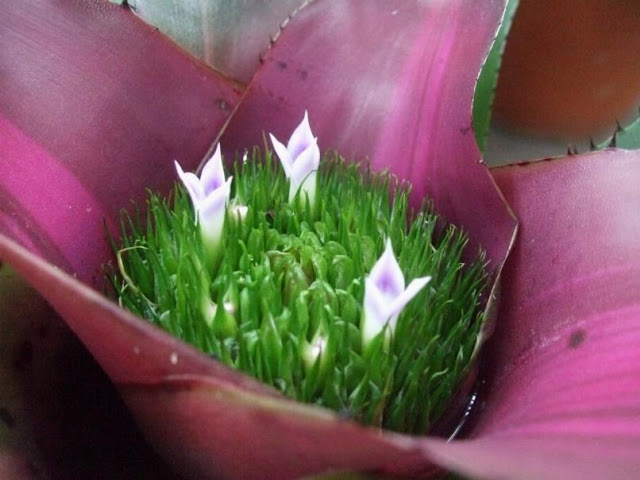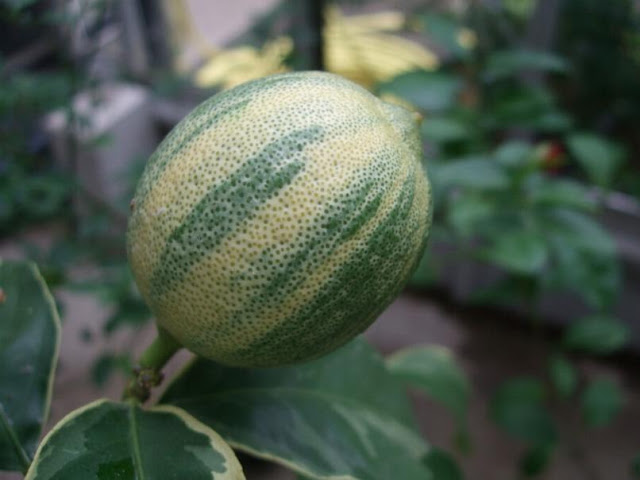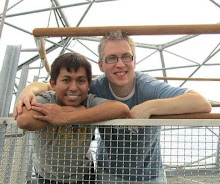Last Sunday, Kew Gardens held an open day for members to go behind the scenes at the Tropical Nursery. The Tropical Nursery is where Kew keeps its scientific collections and also where it propagates plants for use in displays within the Palm House, Temperate House, Waterlily House and Princess of Wales Conservatory.
The Tropical Nursery covers an area of over 6,500m2 and is itself divided into a further 21 climatic environments that are separately controlled and monitored by computer. These zones are split into four main divisions Cacti and Succulents, Moist Tropics, Orchids, plus Temperate and Conservation Collections.
So with various guides and Nursery people on hand we called in for an hour or so on Sunday.
The main walkways though the nursery more closely resemble a laboratory than a nursery, with computer control panels for the climate control situated outside each section. Temperature and humidity are closely monitored and adjusted as required automatically.
Cacti, Euphorbia, Agaves, etc all being carefully tended and grown on, perhaps some of these will grace the arid section in the Princess of Wales Conservatory one day.
|
| Just one section along from the arids and the area is dedicated to exotics, every available space is used, with pots hanging on racks on the walls. |
|
| Please dont water the Saintpaulias... no really please dont! |
|
| A selection of more tropical plants needing warm, humid conditions |
I don't think we have seen a variegated lemon before, not just variegated leaves, but fruit too. Stunning!
Close up of the fruits forming on the Titan Arum (Amorphophallus titanum)
|
| Seed of Agave bracteosa drying ready for sowing and storing, |
|
| The world smallest waterlily (Nymphaea themarum), incredibly rare and endangered. but something of a success story at Kew |
Nymphaea themarum is extinct in the wild (native to Rwanda) but a small number of plants were collected by the Bonn Botanic Garden. However despite the care and attention lavished on them in Germany the scientists were unable to successfully propagate more from seed. That was until Kew worked out the secret and have now grown on a significant number of plants. Perhaps one day this will be reintroduced to the wild.
|
| Aloes as far as the eye can see! |
Its lovely to see behind the scenes to get an idea into just how much work goes into maintaining the glasshouses, as well as getting to talk to a few nursery men and women that tend to these plants :)
Gaz

Email This
BlogThis!
Share to X
Share to Facebook
Share to Pinterest



 This gardening blog follows our journey as we create our Tropical and Exotic themed garden. We hope you'll enjoy the journey as much as we do. We started our Exotic Garden in 2005 and this site will show its development, as well as our travels, both abroad and within the UK to gardens, nurseries and friends.
This gardening blog follows our journey as we create our Tropical and Exotic themed garden. We hope you'll enjoy the journey as much as we do. We started our Exotic Garden in 2005 and this site will show its development, as well as our travels, both abroad and within the UK to gardens, nurseries and friends.














They must have an awful lot going for them that they are successfully growing what others could not. That Titan Arum is sure cool looking. Very unusual plant.
ReplyDeleteCher Sunray Gardens
Hi Cher, they also have a team of students, botanists, and other employees keeping an eye on the collection, which sometimes plays a role in conservation too :)
DeleteWow what a great treat for members, is this the first time they've done such a thing? Was there anything they treated as off limits, saying you could look but no pictures?
ReplyDeleteGlad you guys went and took us all along!
Hi Loree, they open the tropical nursery from time to time, twice a year at least and one of them usually coincides with the first day of Tropical Extravaganza which happens in February (the one where they fill the POW glasshouse with orchids, etc.).
DeleteThey said that they would possibly do more open days, especially if that particular weekend proved popular, to help draw in more crowds especially during 'quieter' months.
There were no restrictions it seemed, and you can take as many photos as far as your camera lens could reach. The smaller alpine section was closed though. It doesn't take long to go through it, and rather than a cause in itself for a special trip, it's more like a complement if one is intending to visit the entire garden coinciding with that day :)
Fascinating! I had never seen titan arum fruits before, and that tiny waterlily is adorable!
ReplyDeleteCollege Gardenener, sometimes they put one of those tiny waterlilies on display inside the waterlily house too, to contrast with the gigantic leaves of the Victoria amazonica :)
DeleteYou could probably harvest some of the titan arum seeds to start some for yourself.
ReplyDeleteHi Steve, the staff there are just waiting for the right moment to harvest them so they can also preserve and distribute the plant to other botanical institutions :)
DeleteI'm glad you enjoyed your wander around the nursery, it's nice to get feedback. There were doubts about having a festival next year due to finacial restrictions,but it's been decided there will be a orchid festival after all in Februay/March.
ReplyDeleteHi Richard, yes we enjoyed it. Good to hear as well that there will be another flower festival next year. It does bring some extra colour and interest in the POW, and in the depths of winter too.
DeleteI would love to visit Kew Gardens if I ever get to Britian. Until then I'll be content with seeing it though your eyes. It's an amazing place.
ReplyDeleteGlad to share Missy :) And yes, Kew is a must to visit when you go on holiday to UK, hopefully soon!
DeleteJust awesome!! That variegated lemon looks amazing, & so does the Amorphophallus. Wonderful photos guys! :)
ReplyDeleteThanks Ngeun! Would love to get hold of a variegated Lemon plant too, especially the fruits are variegated as well :)
DeleteWhat an impressive place. A look behind the scenes is more interesting than the houses themselves.
ReplyDeleteIt's nice to get an insight of their operation Jordan :)
DeleteMust have been fascinating to have a look backstage as it were. Hard to imagine from your first photo that were in a plant growing environment :) Love the look of the variegated lemon. Wonder whether it is widely available or a rarity?
ReplyDeleteIt was great to see behind the scenes, it looks far more like a lab than a nursery. Every area is computer controlled.
DeleteThe lemon is stunning, we have never seen reference to them being for sale before, but would love one if they were.
That variegated lemon is common here, most especially in garden shows!
Delete...and I can't imagine the funds going into that! I remember during undergrad days, we were told about the phytothron where temperatures and humidity, light are all controlled. It sounds so amazing then mostly because of the big cost involved. Now, most of our rare or extinct plants are already found in these structures. Mark is so privileged to see Kew!
ReplyDeleteHi Andrea
DeleteWe have always enjoyed going to Kew, it was great to see behind the scenes!
Nice to hear the variegated Lemons are available to you, I had not seen one before even at garden shows.
I was reading an article in the local paper here in California about trials of citrus trees and apparently the variegated lemon is much in demand for flashy restaurants. I haven't seen one cut open but the paper said the flesh is pink!
ReplyDeleteIts years since I've been in that nursery but its great!